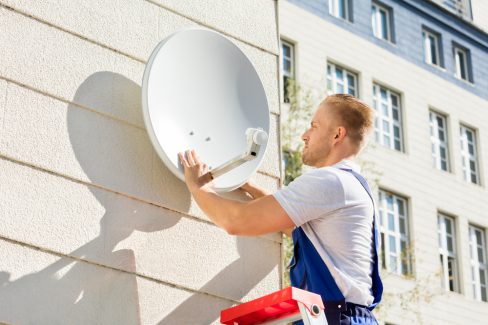LNB is a device that converts high frequency satellite signals to low frequencies. This device, which is mounted on the satellite antenna, processes the signals from the satellite and converts them into a format that the satellite receiver can understand. This device, which we encounter almost everywhere, has a remarkable feature with its functionality. Of course, the fact that you get the performance you want from these devices depends on the correct installation. It is always recommended to get professional support during the installation phase.
What does LNB do?
It is a device that plays an important role in satellite television systems. The main function of the LNB is to convert the high-frequency satellite signals received by the satellite antenna into low-frequency signals and transmit these signals to the satellite receiver. These devices are products that stand out with their functionality. Here are the functional features of the LNB device;
Frequency Conversion
Satellite signals are carried at high frequencies. However, if these high-frequency signals are transmitted directly to the satellite receiver, it may be difficult for the device to process and the signal quality may decrease. One of the main functions of the LNB is to convert the incoming high-frequency satellite signals into signals at a lower frequency. This allows the signal to be more easily processed and transmitted to the receiver.
Noise Cancelling
As mentioned in its name, it has a low noise feature. LNB minimises the noise generated when converting satellite signals at low frequency. This ensures that a cleaner and clearer signal is transmitted to the satellite receiver. Low noise level means better image and sound quality.
Polarisation Control
Satellite broadcasts can have different polarisation planes. For example, channels with vertical or horizontal polarisation. The receiver detects different polarisations and processes them accordingly. In this way, it can distinguish channels with different polarisations and transmit them to the satellite receiver.
Multiple Exits
Some types may have more than one output. This allows more than one receiver or television to receive the satellite signal at the same time. In this way, different devices can watch different channels.
Compatible with Different Devices
Different satellite positions or satellites may offer channels of different frequencies. The receiver adapts the channels of different frequencies so that they can be processed by the receiver.
How does LNB work?
The principle of operation of these effective devices is quite simple. The satellite antenna collects high-frequency signals from satellite satellites and transmits these signals to this device. It receives the high frequency signals and converts them into lower frequency signals. These converted signals are then transmitted to the satellite receiver via satellite cable. There are several components in the internal structure of this device. Here are the most basic components inside the device;
- Converter
- Low-Noise Amplifier
- Polarisation Control
The converter converts high frequency incoming signals into low frequency signals. The Low-Noise Amplifier minimises the noise generated when amplifying the signal, i.e. it amplifies the signal with low noise. It can be adjusted to the horizontal or vertical polarisation of most signals. This is necessary for selecting different satellite channels.
The principle of operation consists of the stages of processing and transmission of signals. Thanks to these stages, the best quality signal is transmitted to the satellite receiver and clear picture and sound are obtained on the television screen. It is very critical that the installation is done properly here. Only in this way can you get the desired benefit from the device.
LNB Types?
Satellite technology has radically transformed the television viewing experience and serves millions of people with a wide range of channels. One of the cornerstones of this technology, it plays an important role in presenting image and sound on television screens by processing the signals coming to the satellite receiver. LNB types are offered with different port capacities according to different usage scenarios.
4-piece
It is a device that converts incoming satellite signals into four different outputs. This type of LNB allows four different satellite receivers or televisions to receive the satellite signal at the same time. It is especially used in homes or small workplaces with more than one television. Each output carries channels on a different satellite frequency so that each device can receive different content.
8-piece
It is a type that converts incoming satellite signals into eight different outputs. This type of LNB is used where there are more users. In places such as apartment buildings, business centres or hotels, 8 LNBs are preferred when multiple televisions need to receive the satellite signal at the same time. Large families or groups of multiple users can also use this type of LNB.
16-piece
It is one of the highest capacity LNB types. It meets multiple user needs by converting incoming satellite signals into sixteen different outputs. This type is preferred where larger scale satellite distribution is required. It is used in areas such as hotels, holiday villages or business centres where multiple televisions need to watch different satellite channels simultaneously.
Which type to choose depends on the usage scenario and need. It is important to choose the right type by evaluating how many televisions you have in your home or workplace and whether each of them will watch different content. For small-scale applications, 4 LNBs may be the best options, while 8 or 16 LNBs may be the best options for larger structures.
4, 8 and 16 LNB types are important components that convert satellite signals into outputs with different port capacities. Each LNB type is designed for different usage scenarios. Choosing the right LNB makes the satellite television viewing experience more effective and enjoyable. Thus, these devices demonstrate an effective performance in achieving a high level of image quality.
